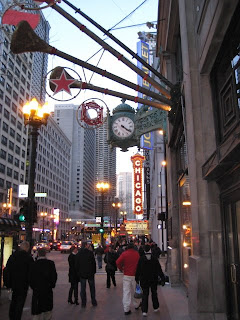Faith Works 1-10-09
Jeff Gill
A Preacher By Any Other Name
Garrison Keillor is coming to Newark in a week and a half, appearing at the Midland Theatre on Wednesday, Jan. 21. You may not have heard his name in the same way that Ben Vereen or Kathy Mattea are well known, but if you’ve not heard of “Prairie Home Companion,” then you may not know about Garrison and his distinctive style on public radio.
He’s written quite a few books and even starred in a movie loosely based on his long running Saturday night radio program, but it’s “PHC” that’s been around some 30 years and created a new style by reaching back to old ways of doing “a show.”
Call it an urbane, upscale “Hee Haw” and I suspect he wouldn’t be offended; if you’re old enough to remember radio shows like “National Barn Dance” on Chicago’s WLS or their heirs at the “Grand Ole Opry” on Nashville’s WSM, you have a better sense of where “PHC” is coming from, with organic bran muffins instead of the cornpone.
I’ve been suggesting for years at my old seminary that they should give an honorary degree to Garrison Keillor, because I suspect there are few people who have had a stronger influence on mainline/oldline Protestant preaching than what so many pastors in those churches listen to Saturday night as they (koff) polish their sermons (koff).
You see, one of the things Garrison does each week, in a show with a format that borders perilously on the liturgical in its regularity and structure, is at the point where a church service might have a sermon, he does The Monologue.
Now, even if you think you’ve never heard of Garrison Keillor, I guarantee you know something of The Monologue, which always starts out with the opening invocation “It’s been a quiet week in Lake Wobegon, my hometown.” Lake Wobegon is a fictional town in an imaginary county in Minnesota, somewhere north of Minneapolis-St. Paul (where the show usually broadcasts from, in the Fitzgerald Theatre). Garrison will tell us about the events and the doings of the population there, and sometimes going abroad to follow her citizens in their travels or the always somewhat wistful exiles who grew up there and left. Church life is as central as the fortunes of the local baseball team, the Lake Wobegon Whippets. Our Lady of Perpetual Responsibility Catholic Church, or Lake Wobegon Lutheran Church, led by Father Emil and Pastor Ingqvist, are often at the heart of what’s going on, even as we venture into the Sidetrack Tap, the Chatterbox Café, or over to Bunsen Motors.
What I’m sure you’ve heard is the closing, which you don’t always see coming, and can sneak up on you (and no doubt the engineer up in the booth working the broadcast), but is clearly marked by the words “That’s the news from Lake Wobegon, where all the women are strong, all the men are good looking, and all the children are above average.”
The thing about the monologue for a preacher is that you can tell – you just can tell, if you get up in front of big groups of people and talk for a living – that he’s put effort into thinking through and planning the rough outline of what he’s going to say, but then he’s laid it aside and is just talking to you, the listener. Which means sometimes the narrative goes in a direction that your spoken reflections and the subtle cues you pick up from your audience steers far out of sight of the security of your prepared text.
There are not infrequently a kind of highwire act moment, when you can just tell that Keillor, struck by what he’s just heard himself describe, and catching a glimpse of where this tale might go next, will windmill a bit into the microphone: “And then . . . and then . . . and then . . . (and the audience in the theatre starts to laugh a bit) . . . and then they saw this bird, with a long, curling tail, fly off into the trees!” There’s just a hint of triumph in his voice, and satisfaction among the audience that they saw him swing and sway a little out over the crowd, but he found his footing, and then the story hurtles forward.
My suspicion is that aside from vocal style, which is unique to the man, Garrison Keillor has emboldened many a pastor to lay aside their manuscript pages, and take a chance that they may actually grope for a word in public, and the congregation won’t mind at all. You may even go in a totally unexpected direction, feeling the gentle nudge of . . . a glance from the choir? A nodding head in the back? A brush of angel’s wings? But you go there, and the listeners go with you.
Jeff Gill is a writer, storyteller, and supply preacher around central Ohio; he waited too long to figure out if he could go to the now sold-out Keillor show, so tell him what you thought about it at knapsack77@gmail.com.
Listen to a Keillor narration with National Geographic photos of places that could/may be Lake Wobegon at the following link (text is there, click sidebar for narrated slideshow):
http://ngm.nationalgeographic.com/ngm/0012/feature5/index.html






















